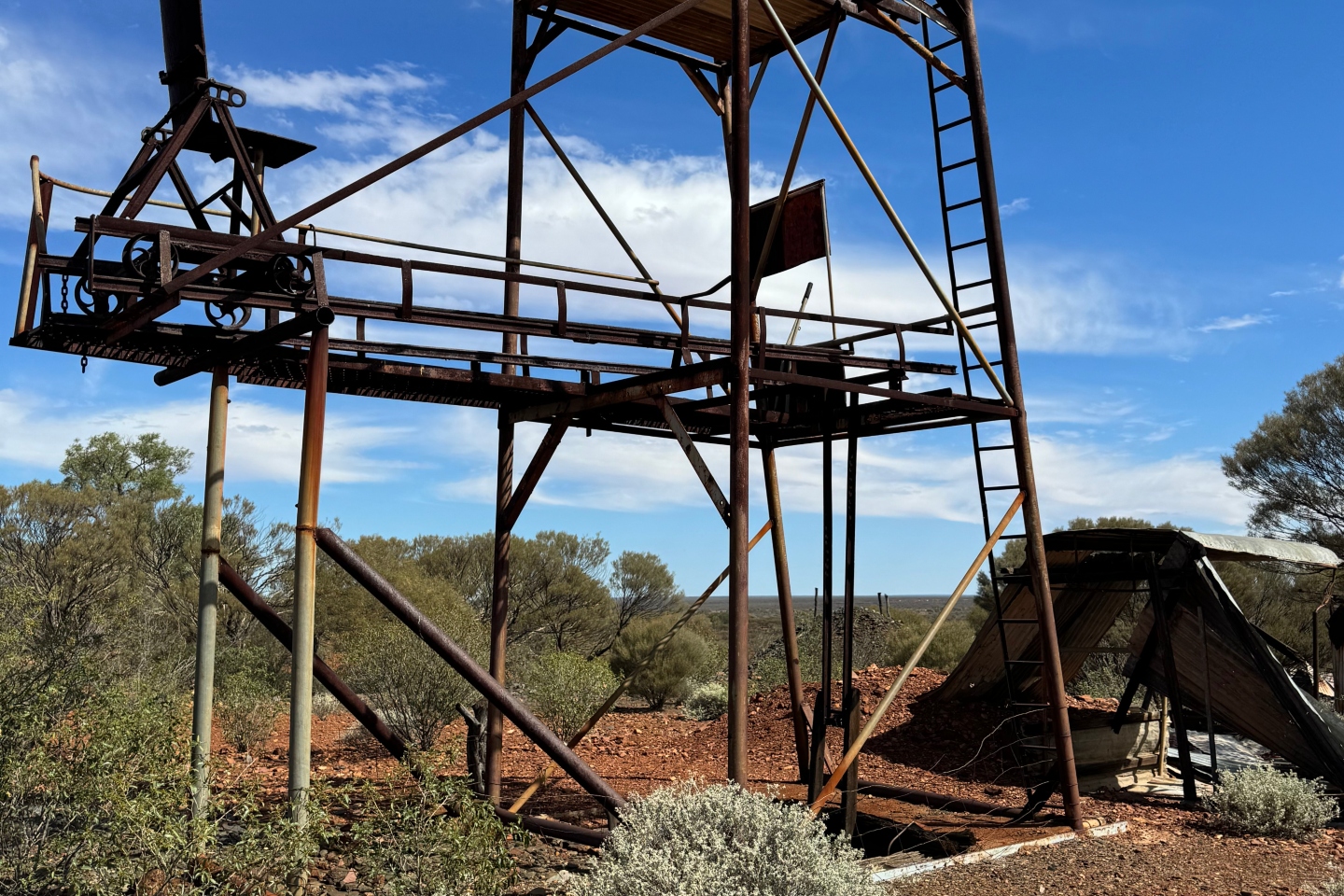Neometals has responded to the current heady gold prices and somewhat lukewarm battery metals market with a strategic re-evaluation of its Barrambie gold project in WA’s Murchison region. The company says it has identified “a compelling opportunity” to use its in-house expertise, infrastructure, strategic position and existing Barrambie exploration target to bring a gold prospect to a decision to mine status in the second half of 2026.


Neometals has responded to the current heady gold prices and somewhat lukewarm battery metals market with a strategic re-evaluation of its Barrambie gold project in Western Australia’s Murchison region.
The company says it has identified “a compelling opportunity” to use its in-house expertise, infrastructure, strategic position and existing Barrambie exploration target to bring a gold prospect to a decision to mine status in the second half of next year.
The company’s principal focus since its acquisition of Barrambie in 2003 has been on the project’s titanium and vanadium deposits, known as one of the world’s highest-grade titanium deposits.
While the ground is also highly prospective for gold mineralisation, minimal gold exploration has taken place since the 1970s.
Neometals’ 706 square kilometres of tenements enclose about 40km of strike along the Barrambie greenstone belt, little of which has been explored for gold.
The company undertook its first assessment of Barrambie using historical data from previous explorers, culminating in the delivery of its Barrambie gold exploration target statement in September last year.
The research revealed that historic gold production from the Barrambie greenstone belt is reported as 27,000 gold ounces at an impressive 27.8 grams per tonne (g/t) gold, definitely a grade that would grab any prospector’s attention, particularly at current gold prices.
The company concluded that significant structural corridors identified in the belt indicate potential for camp-scale gold mineralisation.
That conclusion was partly supported by results from the company’s grab and rock chip sampling across the ground that delivered assays ranging between 5.1g/t and 44g/t gold, in keeping with grades reported from historical mining.
Neometals erected a new geological model for the broader Yilgarn greenstone belt that includes the Barrambie greenstone belt and reflects camp-scale gold prospectivity in specific area. The model also includes other nearby greenstone belts at Gum Creek, Meekatharra-Mount Magnet and Sandstone.
The model generated an exploration target model for Neometals’ 40km tenement coverage of the greenstone belt that ranges between 8 million tonnes at an average grade of 1.3g/t gold to 10.5Mt at an average grade of 2.3g/t gold for an implied 335,000 to 775,000 ounces of gold.
The exploration target model is conceptual and serves only as a guide to prospectivity and potential and is used for exploration and development planning purposes.
Based on the findings, Neometals has trawled its Barrambie project to identify suitable gold projects amenable to near-term, low-capex development.
The company is basing its strategy on priorities that include generating early cash flow. It aims to identify targets with near-term development potential suited to offsite processing options, such as direct ore sale or toll treatment options that will quickly lead to early revenue streams.
Neometals says it is pivoting to gold to diversify its commodity exposure to hedge against current volatility in the battery metals market and it will prioritise the Ironclad prospect, which was previously subject to a pre-feasibility study and a 1988 notice of intent to develop.
The company also wants to use established infrastructure and its extensive historic geological database to reduce development risk and the time and expense of generating new supportive information.
Neometals managing director Chris Reed said: “This emerging gold strategy complements rather than replaces Neometals’ focus on battery materials recycling and refining technologies. It is designed to deliver financial resilience, broaden revenue sources, and deliver long-term value to shareholders.”
Neometals will advance its strategy along three parallel workstreams, including defining potentially higher-grade brownfields development targets for infill and extensional drilling programs, such as at its Ironclad, Barrambie Ranges and Mystery prospects.
In March, Neometals tabled a batch of results from its maiden reverse circulation drilling program at its Ironclad prospect and the nearby Mystery North target at Barrambie.
The top three intercepts returned from the program are 10m at 1.77g/t from 105.0m, including 2m at 2.63g/t; 4m at 2.09g/t from 146m, including 2m at 3.42g/t; and 5m at 1.23g/t from 39m, including 2m at 2.62g/t; and 8m at 1.65g/t from 52m, including 1m at 9.86g/t.
Neometals says it will also undertake regional exploration to identify and progress existing and new targets along the 40km strike of the Barrambie greenstone belt, such as at Kismet, Silver Lining and Woodies prospects.
The strategy is also proposed to encompass strategic partnerships, which will include community engagements where required, reviewing nearby processing facilities and negotiating ore sale or toll treatment options and building on long-standing regional partnerships to expedite project development.
In its timetable taking its activities through to the March quarter 2026, the Ironclad prospect is slated to have attained mineral resource status with a pre-feasibility study.
Additionally, an infill reverse circulation drilling program, geological and metallurgical drilling at Barrambie Ranges is forecast to elevate the prospect to inferred mineral resource status.
At Mystery, geological and metallurgical diamond drilling campaigns are proposed to have lifted the prospect to inferred mineral resource status.
The new strategy makes sense as current global economics and instabilities appear to favour fair winds for gold in the foreseeable future, while battery minerals which have been the company’s priority until recently have been caught in the doldrums.
Is your ASX-listed company doing something interesting? Contact: matt.birney@businessnews.com.au














